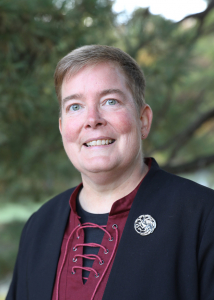The Suggested Repertoire from Around the World for Developing Bands series is a new WASBE program of instructional materials to assist music directors in identifying exceptional works from around the world that are playable by developing musicians. Each of the selections in this series provides a myriad of musical elements that might be explored and developed within the rehearsal context, but the goal is to present music of artistic merit that aligns most directly to the composer’s unique voice. These are selections that stand out from works written largely for teaching purposes.
Our installments include four-five such works, each to be contributed by WASBE members from throughout the world. The offerings include exceptional and diverse works from around the world. Some of the selections will be well known while others will be quite unfamiliar to most – and there will be more than a few older compositions that we hope will be revisited, reacquainted, or discovered anew.
This 8th installment (September 2023) is submitted by Spanish WASBE member and conductor José Vicente Algado Climent.
“I would like to propose five pieces that we could use, pedagogically, to develop different aspects of the music. But above all, with the firm purpose of showing young musicians that in the 21st century there are many ways to organize sounds and silences. Therefore, the sooner they open their minds and ears, the better for their education, the evolution of music, and specifically for wind bands.”
Grade 2
Supervillain (2020) -2:30-
Kimberly K. Archer (USA, 1973)

Notes from the composer:
Supervillain is a “fictional evildoer or antihero, widely popularized in comic books and comic strips, television and film, and popular culture and video games, whose extraordinary powers are used toward nefarious ends. Supervillains are the counterpart and arch-enemy of superheroes.”
As the composer explains: “The seven notes of a major or minor scale might be enough for a regular villain, but such a fiendish, cunning character requires a “superscale” – in this case, the eighth notes of an octatonic or “diminished” scale.”
Supervillain is an excellent piece to show young musicians that the major or minor scale is not the only way. The octatonic scale or any other system of sound organization is possible! An important thing is that the composer proposes extra material to work melodically and harmonically on the octatonic scale.
Kimberly K. Archer is currently serving as Professor of Composition at Southern Illinois University in Edwardsville. She holds a DMA in Composition from the University of Texas at Austin, a MM in Composition from Syracuse University, and a BME from The Florida State University. A specialist in music for winds and percussion, her music has been performed worldwide.
Grade 2,5
Second Thoughts (2014) -4’- Gr 2,5 Stephenson Music
James M. Stephenson (USA,1969)

Second Thoughts was commissioned by Rich Paluch and the Mannheim Middle School Educational Foundation to the composer James M. Stephenson.
Mr. Stephenson is one of the most prolific American composers. After spending 17 years as a trumpeter, he decided to dedicate himself completely to composition. His works have been performed by leading American orchestras, instrumentalists, and wind ensembles around the world.
Stephenson is also active in the concert band world, with premieres occurring at major venues such as the 2010 Midwest Clinic and the 2011 ABA (American Bandmasters Association) convention with the US “President’s Own” Marine Band. He has recently premiered his fourth symphony.
He proposes a fantastic piece focused on the work of the intervals, melodic lines, and dynamics. There are no better words to describe this piece than those that the composer suggests:
“Second Thoughts” is an exercise in three parts:
- Understanding that seconds aren’t necessarily dissonant, and should be played confidently, and with care toward intonation, to achieve the desired effect.
- There are two main themes. Oftentimes, the first theme is accompanied by the second theme, or snippets thereof. It would be an interesting exercise for the instructor to challenge the students to discover how these themes are put together.
- “Second Thoughts” is mainly a lyrical and reflective piece, as if the author (not this author) is looking back and perhaps having second thoughts about something from their past. Therefore, many of the dynamics are of the softer nature. Playing softly is one of the most often neglected aspects of performance practice (from my observation), and so I would encourage strong emphasis on reading the dynamics.
Grade 3
Jovenívola (2015) -5’- not published yet.
Juan Alborch Miñana (Spain, 1973)

Jovenivola was commissioned by the Beniarrés (Spain) City Council in 2015 to be a compulsory piece of the Beniarrés Young Band Contest.
It is an invention for Wind Band where the composer uses counterpoint textures to develop the piece. It has three main themes, which seems like a Spanish children’s song. The composer develops two of them contrapuntally, where the melody goes through different instruments and textures (fugato). The other one is used more lyrically between the counterpoint sections. The work is masterfully orchestrated and ends with a little coda where he uses the beginning motif.
This piece could be fantastic for introducing young musicians to imitative textures. As well as to discover who is playing the main theme in each moment and, therefore, if we are playing the same articulation and dynamic.
Juan Alborch Miñana studied composition at “J. Rodrigo’s Conservatory of Music” in Valencia (Spain). His range of works cover chamber ensembles, symphony orchestras, and wind bands. He has also produced two albums with his own chamber music; “Suite Utopica, Divers.” Currently, he teaches composition at “Josep Climent’s Conservatory of Music” in Oliva (Spain), as well as being a wind band conductor.
Grade 3
Romance (2011-AV31g) -7’- Piles Music
Andrés Valero Castells (Spain, 1973)

Romance is an original piece for soprano and piano based on Gerardo Diego’s poem “Romance del Duero”. In 2013, due to the “V Congreso Iberoamericano de Compositores, Directores y Arregladores de Bandas sinfónicas” Andrés Valero arranged it for Wind Band.
It is a sweet lyrical piece in four sections (A-B-A’-B’) and a brief introduction. In the main theme, a flugelhorn solo is featured, while in the secondary theme, the oboe takes over with a lyrical solo. The use of modal harmony, the Phrygian cadence, the “Cajón Flamenco” and some characteristic motifs give the piece a Spanish traditional essence.
Since I conducted this piece, I felt in love with it, and I used it to work on expression, the balance between the melody and the accompaniment, as well as the Phrygian mode.
Andrés Valero Castells is one of the most prolific Spanish composers who has explored the sound of the wind band from tradition to vanguard technique. He has won important awards, and his works have been performed worldwide.
In addition, he is a prolific conductor who works with the most important Spanish wind bands, such as the Municipal Symphonic Band of Madrid, Barcelona, Valencia. In the 2012–2016 season, he was the principal conductor of the Municipal Wind Band of Coruña. Since 2004, he teaches composition at “J. Rodrigo’s Conservatory of Music” in Valencia (Spain).
Grade 3
Letter from Sado (2014) -8’- American Composers Forum/Hal Leonard
Jodie Blackshaw (Australia, 1971)

In the first installment, James Ripley proposed an amazing piece by Jodie Blackshaw. I would like to propose another one, called “Letter from Sado”. A wonderful piece that is not only centered in melody and harmony. Mrs. Blackshaw proposes other musical elements to express her ideas.
Notes from the composer:
Letter from Sado “is a piece based on a Japanese haiku of the same name. Sado refers to Sado Island in Japan in which various artists, religious and military leaders were sent in exile many years ago. The island has historically had a strong community of taiko drummers and as such, the piece incorporates optional homemade taiko drums.”
On the American Composers Forum’s web site, the author writes: “To capture the idea of interpretation and the concept of “reading between the lines”, the students are invited to become decision makers about particular sections in the music.” For example, the opening and closing sections of the piece use the same material…the students themselves decide how to play these figures as individuals.”


